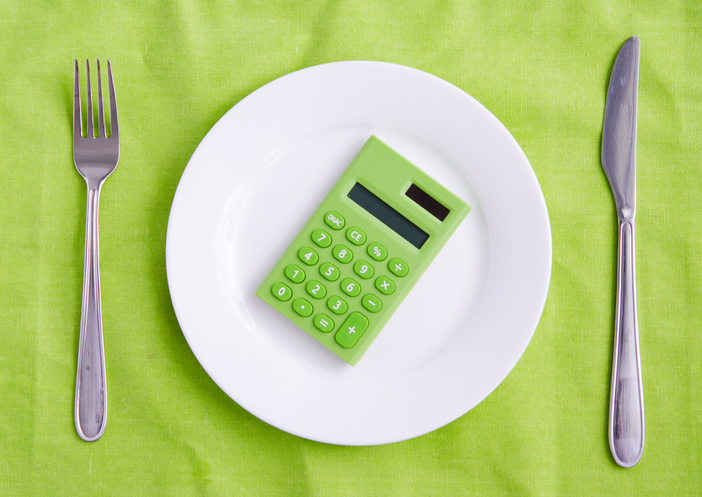 Eating disorders happen when someone’s relationship to food spirals out of control. This could manifest in all sorts of ways. Some people eat too much, some eat too little, and others struggle with the physical act of eating.
Eating disorders happen when someone’s relationship to food spirals out of control. This could manifest in all sorts of ways. Some people eat too much, some eat too little, and others struggle with the physical act of eating.
Eating disorders generally occur because people develop complicated relationships with food or their bodies. They may try to control their bodies through exercise, medicine, or diets. Others may use food to soothe painful feelings.
Eating disorders don’t simply cause emotional distress. They can also cause physical health problems. In severe cases, they may even be fatal.
- Common Eating Disorders
- Extreme Dieting
- Why Do People Develop Eating Disorders?
- Eating Disorders in Different Populations
- Getting Help for Eating Disorders
Common Eating Disorders
The Diagnostic and Statistical Manual of Mental Disorders (DSM) is a book that experts use to diagnose mental health conditions. The DSM does not list every possible eating and food issue. However, it does list the most common conditions and how to recognize them.
The six specific types of eating disorders listed in the DSM are:
- Binge eating is characterized by extreme overeating. A person will consume excessive amounts of food in a short period of time. The person usually feels as if they have no control over what they eat or when they stop. It is common to feel shame or regret over how much one has eaten. These binge-eating episodes usually happen at least once a week.
- Bulimia nervosa is a cycle of binge eating and purging. A person will have a binge-eating episode followed by guilt and embarrassment. They will go to extreme measures to avoid gaining weight from the binge. The person may force the food from their system through laxatives or vomiting. They could also get rid of calories through fasting or excessive exercise. Usually someone with bulimia has an average or above average body weight.
- Anorexia nervosa is marked by extreme food restriction. Like bulimia, anorexia involves an intense fear of gaining weight or becoming fat. Even when someone is dangerously thin, they will often see themselves as overweight. The DSM identifies two subtypes of anorexia:
- Restricting Type: This type is the more common of the two. A person will lose weight by eating very little food. They may exercise a lot to burn off what few calories they have eaten.
- Binge-eating/Purging Type: A person with this type may also restrict their diet. Yet they will also experience periods of binge eating and purging. Unlike someone with bulimia, this person will probably be underweight.
- Avoidant/Restrictive Food Intake Disorder (ARFID) is a condition where someone does not eat enough to get their daily nutrition and energy needs. Unlike anorexia, ARFID rarely involves any obsession with weight. Someone with ARFID often refuses to eat because they dislike the taste, smell, or texture of the food. If someone had a traumatic experience with choking or vomiting, that memory could also lead to ARFID.
- Pica is a rare condition. Someone with pica eats substances that are not food, such as clay, paper, soap, chalk, mud, or laundry starch. A person may be drawn to consume such substances due to the texture or flavor of the item. The action of eating the substance may be self-soothing. Pica is more commonly found among specific populations, including adults with iron deficiency, pregnant women, and children.
- Rumination is the compulsive regurgitation of food. After vomiting the food, a person may chew and swallow the food again, or they may spit the food out. To count as rumination, the symptoms should not occur as a part of a medical condition like an upset stomach.
Extreme Dieting
Not all eating and food issues fall into the six categories above. If a behavior causes distress and interferes with daily life, it can still qualify as an eating issue. One doesn’t need a diagnosis to have a problem.
Many people can diet in a way that does not hurt their bodies. Some try to lose weight by reducing calories or avoiding certain foods. Others diet to manage their food allergies or cleanse their bodies. But if they take a diet too far, it can backfire and damage their health.
What does an extreme diet look like? It might involve long periods of fasting or severe calorie restriction. Or it could be an obsession with eating certain foods. If someone is so concerned with a healthy diet they would rather go hungry than eat “bad” food, they may have an eating issue.
Extreme dieting can seriously harm physical and mental health. If someone does not eat enough food, they could have digestive problems, dehydration, and decreased metabolism. Malnutrition could also lead to stress and concentration problems.
While there is no clear distinction between a healthy diet and an extreme one, the following signs may indicate a concern:
- Decreased energy level: A significant lack of energy can mean one’s calorie intake is too low.
- Constant thoughts about food: One’s relationship with food may be harmful if they obsess about food in all times and situations.
- Difficulty sleeping: Disrupted sleep can mean an individual is not eating enough. They may not be getting the nutrients necessary for good sleep.
- Elimination of entire food groups: Each food group contains nutrients necessary for a balanced diet. Getting rid of an entire food group, such as carbohydrates, may lead to weight loss. However, it can also lead to health symptoms like dizziness or fatigue.
- Mood swings: Severely restricting calories can lead to anxiety, depression, and irritability.
- Changing social schedule: A diet may be too restrictive if the person plans their life around their diet or declines social events to avoid eating.
Why Do People Develop Eating Disorders?
 Many Western cultures glorify thinness. American pop-culture is filled with weight-loss programs, diet trends, and body-shaming. These messages can provide fertile ground for eating disorders. Some people come to believe thinness makes a person desirable, while fatness makes someone unworthy. In such cases, eating disorders are ultimately concerned with one’s self-worth.
Many Western cultures glorify thinness. American pop-culture is filled with weight-loss programs, diet trends, and body-shaming. These messages can provide fertile ground for eating disorders. Some people come to believe thinness makes a person desirable, while fatness makes someone unworthy. In such cases, eating disorders are ultimately concerned with one’s self-worth.
People with eating disorders often experience anxiety, low self-esteem, and a strong need to please others. They may feel pressure to achieve perfection, not just with their bodies, but in every facet of life. Other individuals are responding to past trauma, using food to regain a sense of control. A family history of eating disorders may also increase a person’s potential for unhealthy behavior.
Eating Disorders in Different Populations
Eating disorders do not discriminate. They can affect people of any age, race, gender, and sexual orientation. Around 30 million Americans will experience an eating disorder in their lifetimes.
- Women: Studies show women are more likely than men to experience eating disorders. Around 0.9% of women will experience anorexia in their lifetimes. This rate jumps up to 1.5% for bulimia. Eating disorders are the third most common chronic condition for adolescent females.
- Men: Around one in three Americans with an eating disorder are men. This number is growing, but the reason why is unclear. There could be more men living with an eating disorder, or more men could be opening up about their experiences. Like women, men can live with poor body image or low self-esteem. These feelings can contribute to problematic eating behaviors. But since eating disorders are often seen as “a girl problem,” many men feel ashamed of their conditions. Stigma could explain why men are less likely to get help for eating disorders.
- LGBTQ+: Certain LGBTQ+ populations have disproportionate rates of eating disorders. For instance, an estimated 5% of men are homosexual, but 42% of men with an eating disorder identify as gay. In a 2015 study, transgender college students were more likely to display purging behaviors such as vomiting. Studies suggest LGBTQ+ individuals may be prone to eating disorders due to the stresses of being a sexual minority. LGBTQ+ people may face bullying, isolation, homelessness, and general barriers to treatment. Discrimination can cause anxiety and depression, which then can lead to an eating disorder.
- Adolescents: Most individuals affected by eating disorders are adolescents. The average age of onset is around 12-13 years of age. Peer pressure and social media can promote unrealistic beauty standards. Some teens feel they must diet to "fit in." (That said, eating disorders are not limited to youth. A U.K. study found 3% of women ages 40-59 had problematic eating habits.)
- Ethnic Minorities: Marginalization impacts the likelihood a person might have an eating disorder. For example, black teens are 50% more likely than white teens to develop bulimia. Studies show higher rates of binge eating among all ethnic minorities. However, researchers say national statistics tend to under-represent marginalized groups. Clinicians are less likely to diagnose eating disorders in women of color, partly due to the myth that only white women get them. This erasure limits individuals’ ability to get help, and it may explain why people of color are less likely to seek treatment for eating disorders.
Getting Help for Eating Disorders
Eating disorders can be complicated conditions. If you or a loved one is considering treatment, you can go to our directory and find a therapist who specializes in eating disorders.
Remember, there is no shame in needing help.
References:
- Bowles, C. (2015). The negative side effects of extreme diets. Retrieved from http://www.livestrong.com/article/498652-the-negative-side-effects-of-extreme-diets
- Bryant-Waugh, R., & Kreipe, R. E., M.D. (2012). Avoidant/restrictive food intake disorder in DSM-5. Psychiatric Annals, 42(11), 402-405. doi:http://dx.doi.org/10.3928/00485713-20121105-04
- Crain, E. (2014). Six signs your diet is too extreme. Women’s Health. Retrieved from http://www.womenshealthmag.com/weight-loss/extreme-dieting
- Cusido, C. (2015, December 7). “Eat up”: How cultural messages can lead to eating disorders. NPR. Retrieved from https://www.npr.org/sections/thesalt/2015/12/07/458490852/eat-up-how-cultural-messages-can-lead-to-eating-disorders
- Diemer, E. W., Grant, J. D., Munn-Chernoff, M. A., Patterson, D. A., & Duncan, A. E. (2015). Gender identity, sexual orientation, and eating-related pathology in a national sample of college students. Journal of Adolescent Health, 57(2), 144-149. Retrieved from http://www.jahonline.org/article/S1054-139X(15)00087-7/fulltext
- Eating disorders. (n.d.) National Institute of Mental Health. Retrieved from http://www.nimh.nih.gov/health/publications/eating-disorders/index.shtml
- Eating disorders and youth. (n.d.) Mental Health America. Retrieved from http://www.mentalhealthamerica.net/conditions/eating-disorders-and-youth
- Eating disorders can strike in mid-life. (2017, January 17). BBC. Retrieved from http://www.bbc.com/news/health-38635082
- Eating disorders in LGBT (gay/lesbian/bisexual/transgender) populations. (2012). National Eating Disorders Association. Retrieved from https://www.nationaleatingdisorders.org/sites/default/files/ResourceHandouts/LGBTQ.pdf
- Eating disorder treatment: Know your options. (2017, July 14). Mayo Clinic. Retrieved from https://www.mayoclinic.org/diseases-conditions/eating-disorders/in-depth/eating-disorder-treatment/art-20046234
- Facts about eating disorders: What the research shows. (2016). Eating Disorders Coalition. Retrieved from http://eatingdisorderscoalition.org.s208556.gridserver.com/couch/uploads/file/fact-sheet_2016.pdf
- Fawcett, J., M.D. (2012). Eating disorders and the DSM-5. Psychiatric Annals, 42(11), 394-395. doi:http://dx.doi.org/10.3928/00485713-20121105-01
- Fetters, K.A. (2015). What happens to your body when you go on an extreme diet. U.S. News & World Report. Retrieved from http://health.usnews.com/health-news/health-wellness/articles/2015/06/19/what-happens-to-your-body-when-you-go-on-an-extreme-diet
- Ham, J., Iorio, D., & Sovinsky, M. (2012, August 28). Race, social class, and bulimia nervosa. Human Capital and Economic Opportunity Working Group Working Papers, 16. Retrieved from ftp://ftp.repec.org/opt/ReDIF/RePEc/hka/wpaper/Ham_Iorio_Sovinsky_2012_race-class-bulimia.pdf
- Hartmann, A. S., PhD., Becker, Anne E., M.D., PhD., Hampton, C., M.P.H., & Bryant-Waugh, R. (2012). Pica and rumination disorder in DSM-5. Psychiatric Annals, 42(11), 426-430. doi:http://dx.doi.org/10.3928/00485713-20121105-09
- Marginalization and eating disorders. (n.d.). National Eating Disorders Association. Retrieved from https://www.nationaleatingdisorders.org/learn/general-information/marginalization
- Research on males and eating disorders. (n.d.). National Eating Disorders Association. Retrieved from https://www.nationaleatingdisorders.org/research-males-and-eating-disorders
- Swanson, S. A., Crow, S. J., Le Grange, D., Swendsen, J., & Merikangas, K. R. (2011). Prevalence and correlates of eating disorders in adolescents: Results from the national comorbidity survey replication adolescent supplement. Archives of General Psychiatry, 68(7), 714-723. Retrieved from https://jamanetwork.com/journals/jamapsychiatry/fullarticle/1107211

